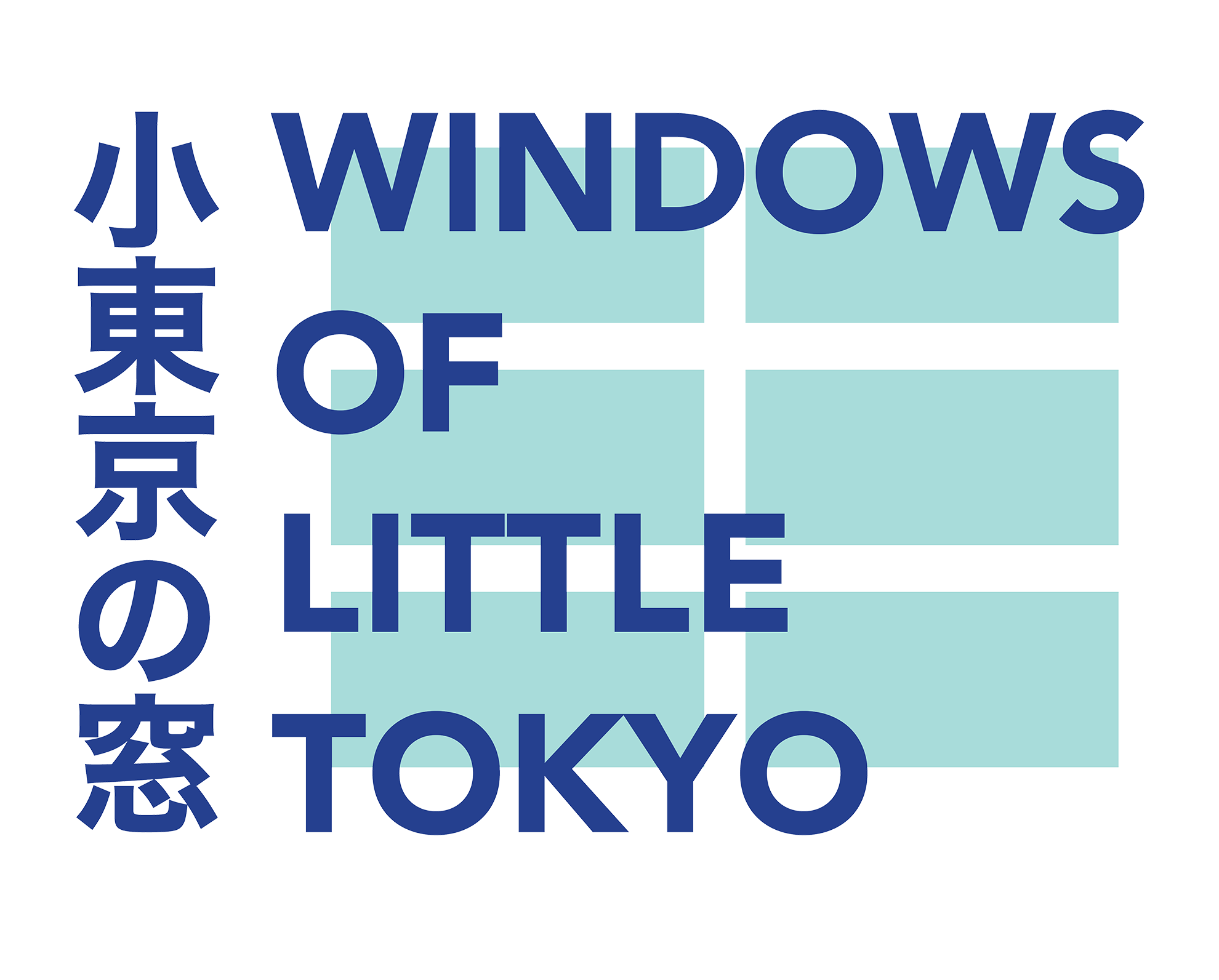
Windows of Little Tokyo
November 2, 2019
2019年11月2日
Little Tokyo transforms into an outdoor art exhibition with 10 artworks displayed on windows across our historic, 135-year-old Japanese American neighborhood. See 11 visions of the past, present, and future of Little Tokyo!
135年の歴史のある日系アメリカ人の街、リトルトーキョーの中にある 10 のショーウィンドウにアートを展示する屋外美術展を開催します。リトルトーキョーの現在、過去 そして未来と11の世界観を ご覧ください!
Artworks by:
Alan Nakagawa
amwa
Angelica Villegas & Jen Cienfuegos
Cat Chiu Phillips
Chiho Harazaki
Edwin Ushiro
Kenji Liu
Kristen Sadakane
Kuniharu Yoshida
Nancy Uyemura
Sites:
Far East Lounge
JACCC
J Morey Co.
Cafe Demitasse
Cafe Dulce
LA Food Policy Council
Koban
Little Tokyo Branch Library
Mitsuru Sushi & Grill
The National Center for the Preservation of Democracy @ JANM
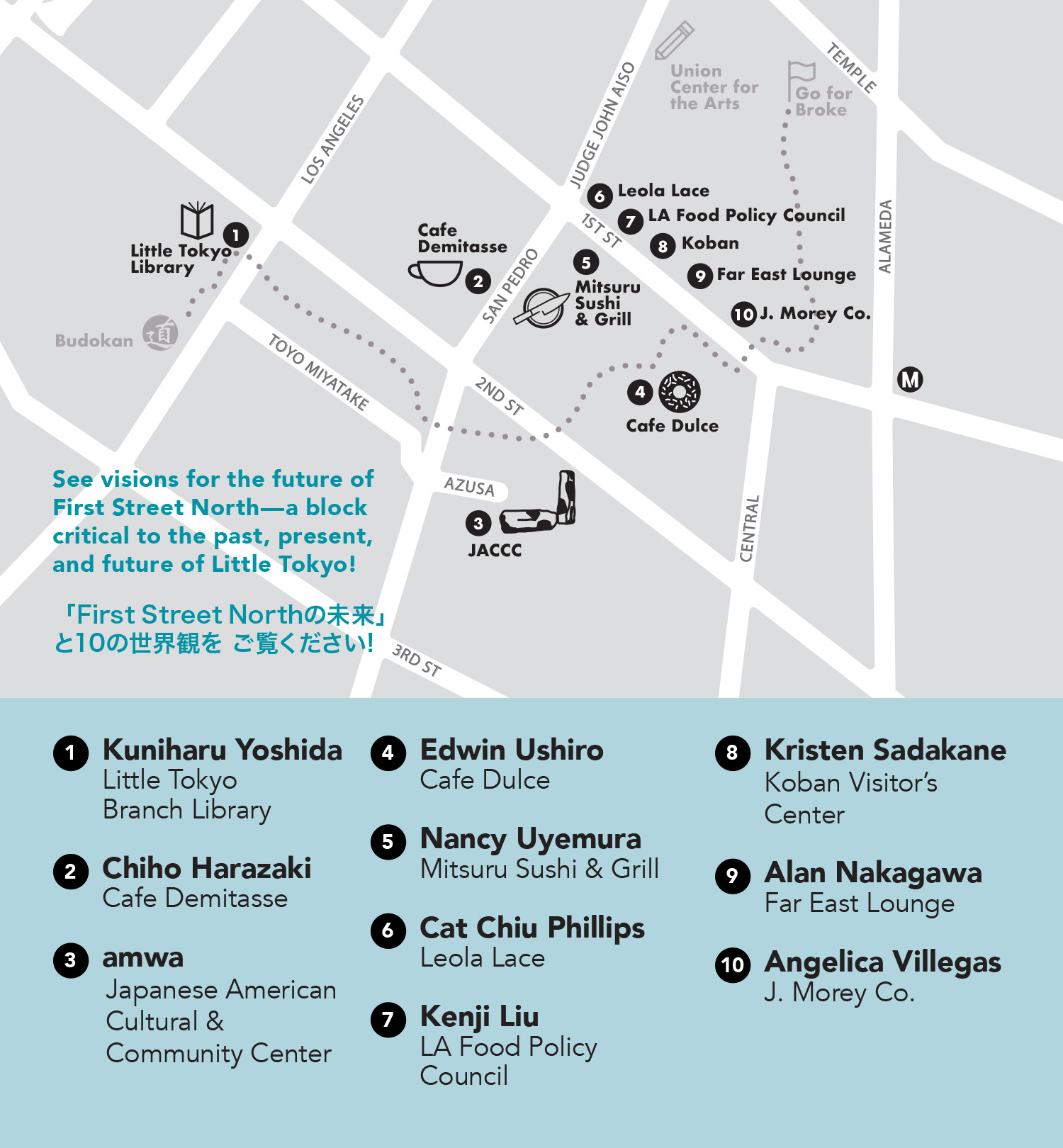
Funded in part by The Andrew W. Mellon Foundation and The Kresge Foundation. With support from California Arts Council and Cafe Demitasse.
2019 ARTWORKS & ARTIST BIOS
1
The Past is Present 温故知新
By Kuniharu Yoshida
Little Tokyo Branch Library
203 S Los Angeles St
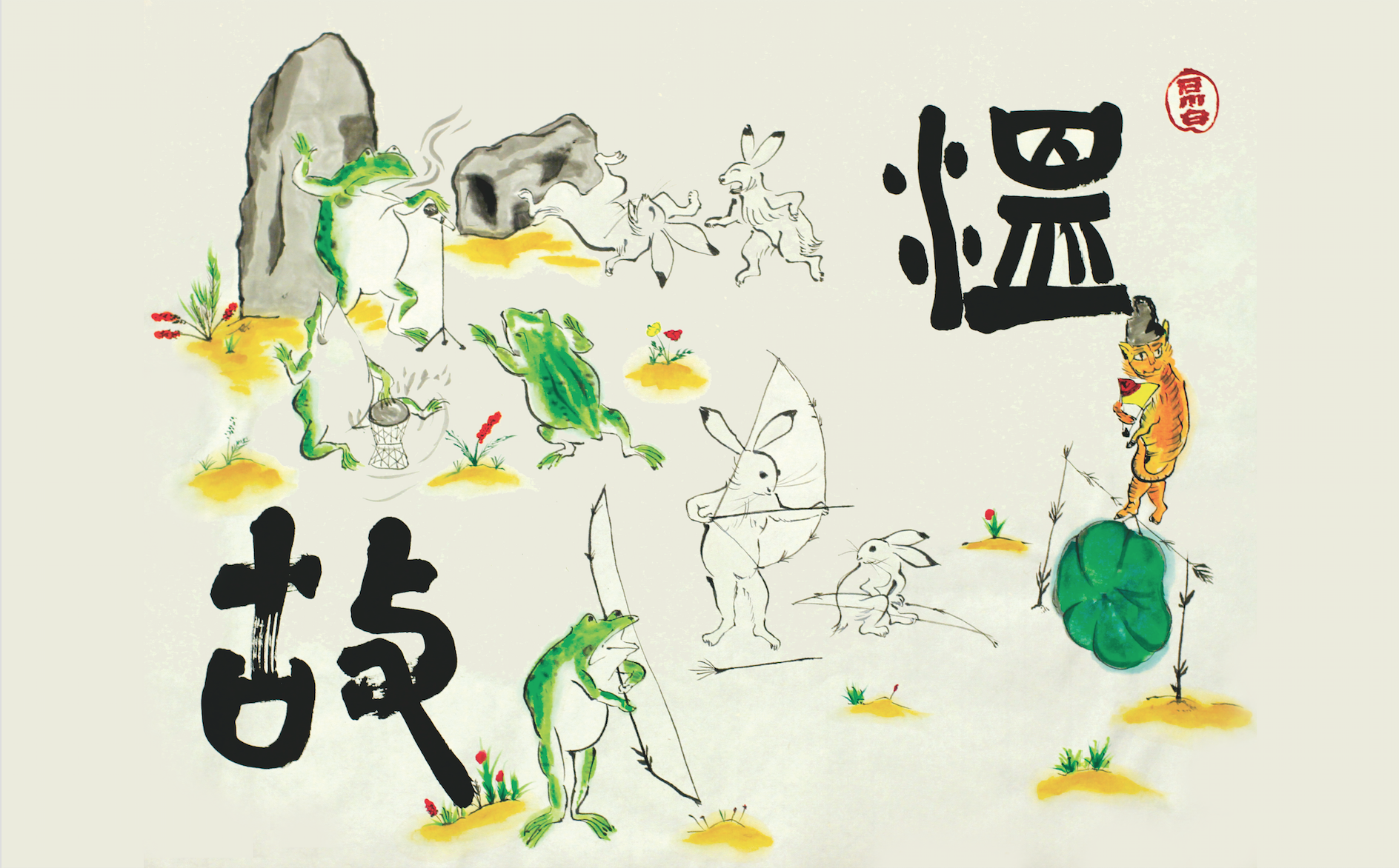
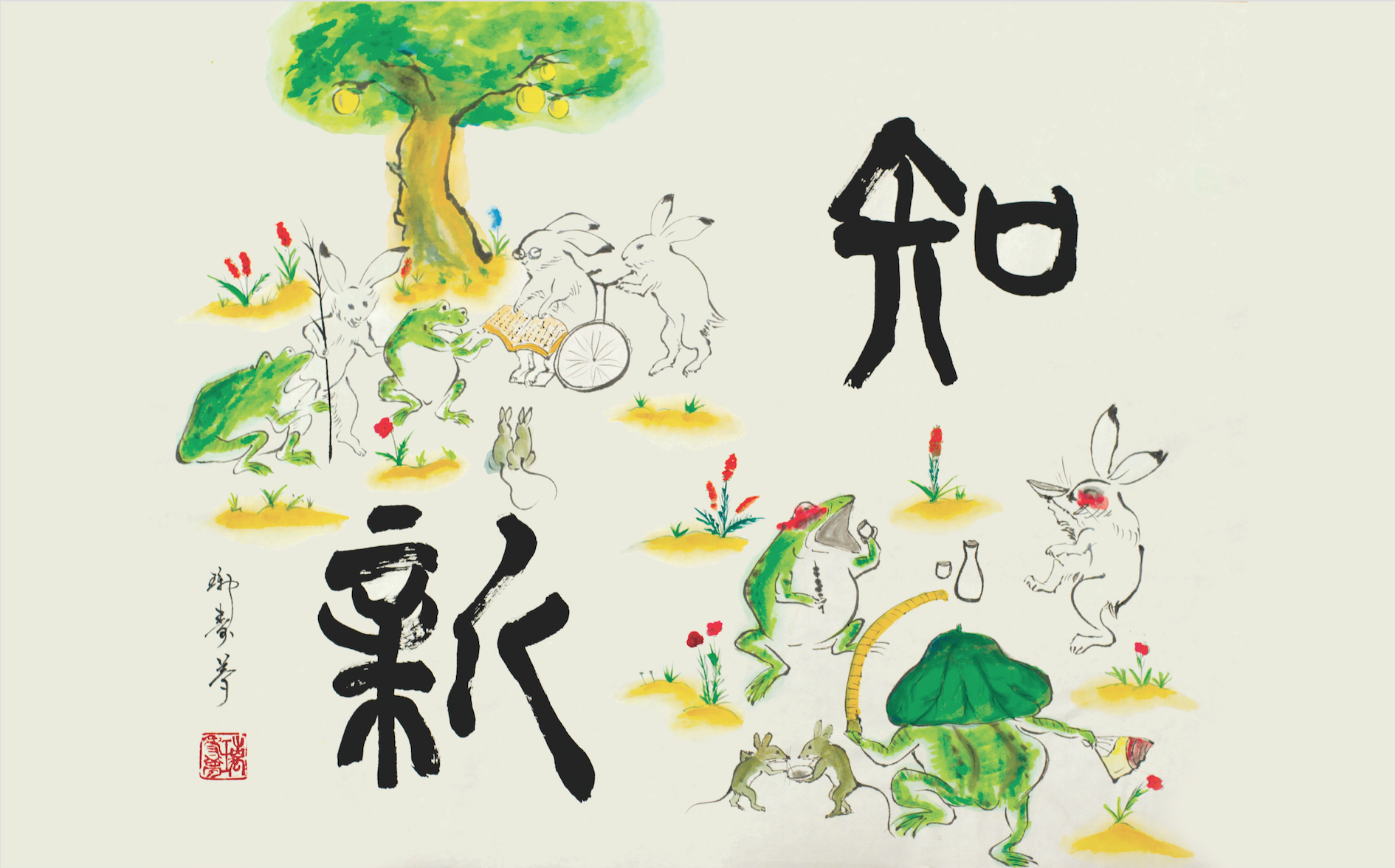
The Past is Present 温故知新 is inspired by 鳥獣戯画 (chōjū-jinbutsu-giga / ”animal-person caricatures”), a famous set of Japanese scrolls. Considered the first interpretation of a Japanese manga, it depicts 12th-century life through animals doing traditional activities. The four Japanese characters, 温故知新 (onkochishin), mean developing new ideas based on the study of the past.
In appreciation of the Little Tokyo community, I replicated the story with a modern Little Tokyo twist, and show the ongoing importance of our close, intergenerational community. In The Past is Present, the original scrolls’ important message continues to endure. The artwork includes symbolic and key Little Tokyo landmarks, such as Isamu Noguchi's sculpture To The Issei (first-generation Japanese Americans) at JACCC, and Sunny the historic grapefruit tree. Enjoy this artwork by creating your story, imagining the possibilities of what the characters say, think, and do, and considering how it relates to your thoughts and wishes for Little Tokyo.
Kuniharu Yoshida is a Japanese calligrapher and hip-hop dancer, merging traditional arts with the contemporary. Kuniharu’s work fosters respect between cultures as he intertwines art and diverse communities. He has been involved in numerous Little Tokyo programs, such as LTSC +LAB Artist Residency, Nisei Week Festival, and more. Kuniharu is currently the CAC Artist in Communities resident at JACCC. www.groovyboogie92.wixsite.com
2
Window of the Soul
By Chiho Harazaki
Cafe Demitasse
135 S San Pedro St
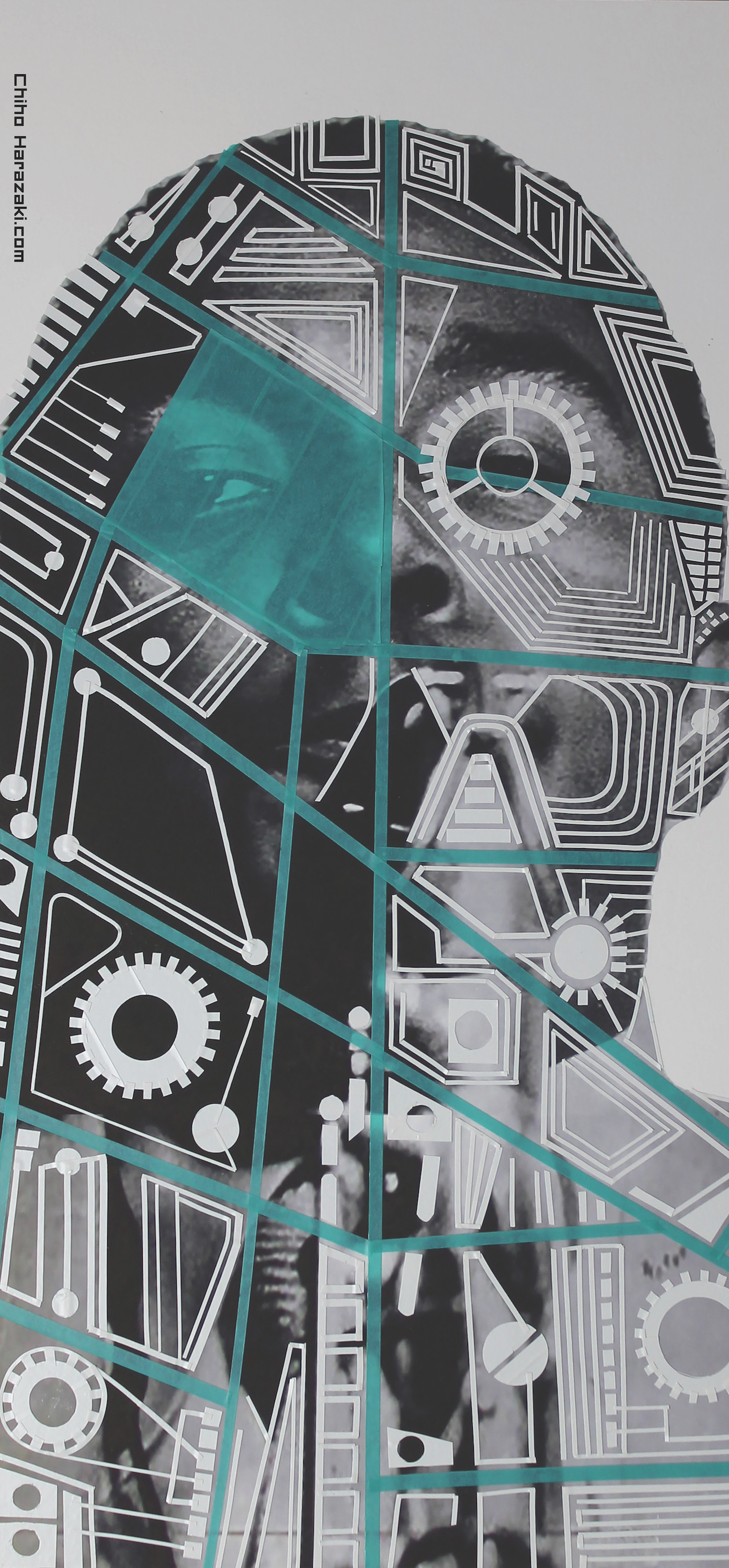
In the 1940s, Little Tokyo became an African American community known as Bronzeville. During its heyday, one of the most influential jazz musicians of all time, Charlie Parker, had a residency at the Finale Club and lived at the Civic Hotel on 1st Street. This artwork expresses the urgent need to protect and preserve First Street North (FSN), our local businesses, and our unique Japanese American heritage through music and art. Parker’s portrait is overlaid with a map of Little Tokyo with FSN on Parker’s eye, indicating Bronzeville as the center for jazz in the past and FSN as the historic heart of Little Tokyo in the present. Parker's portrait is adorned with an electronic circuitry pattern to look forward to a bright future for Little Tokyo. Art and music are opportunities to start conversations, make friends, and bring diverse people together to build a stronger future for Little Tokyo. I hope that my art will inspire people to become interested in the history of Bronzeville and Little Tokyo, and that it will increase awareness of the current critical issue of encroachment on First Street North.
Chiho Harazaki: “My art is influenced by growing up in Japan and moving to Los Angeles—a home to many different cultures and backgrounds. I hope my art will inspire people to become interested in Japanese American culture, celebrate our differences, and promote a world of people of all backgrounds living love-based lives together. My artwork consists of precision-cut tape to create details that compose a whole, reminiscent of traditional Japanese woodcut and papercut.” www.chihoharazaki.com
3
potluck: meet me between san pedro, first, requena, and central
By amwa
JACCC
244 S San Pedro St
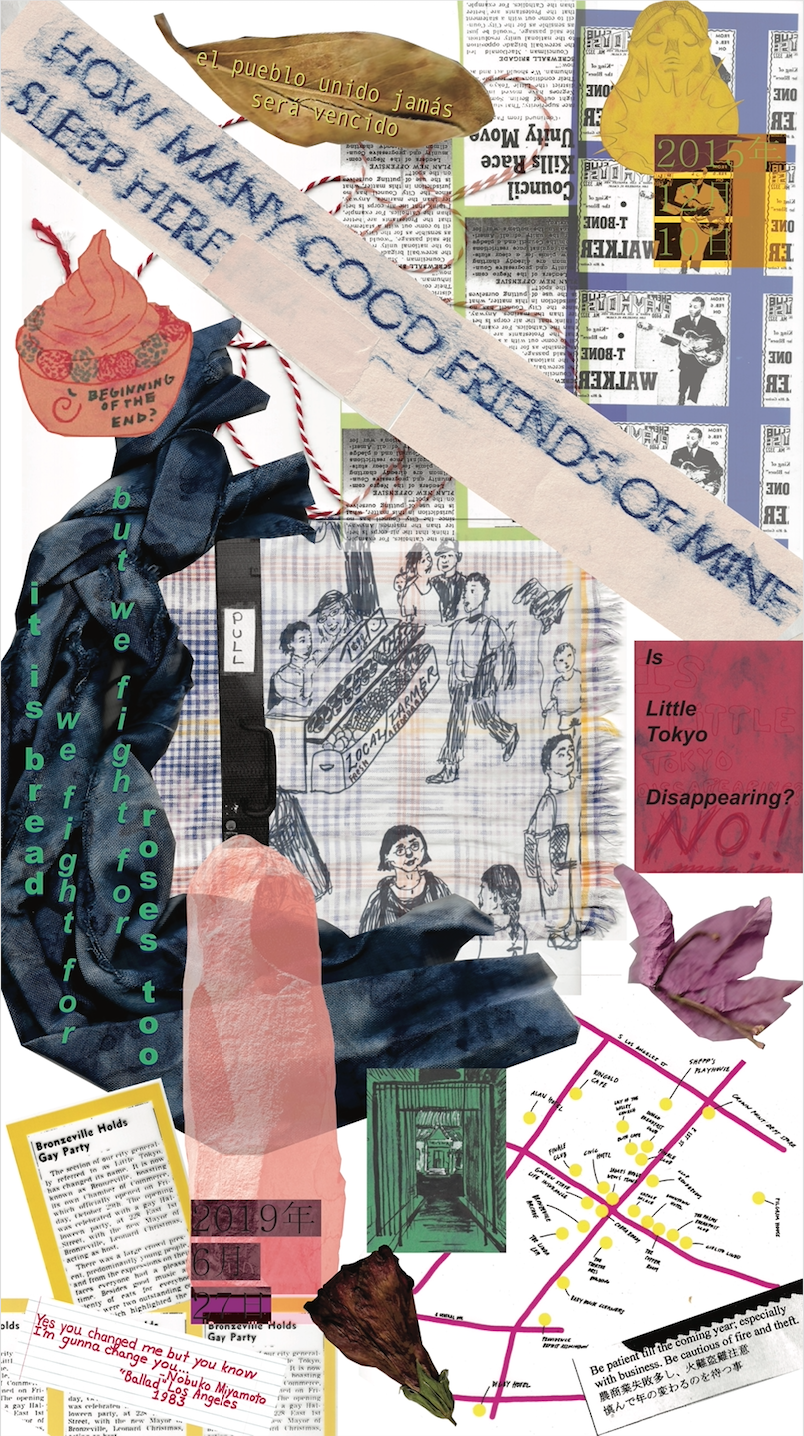
Our collaborative collage weaves together amwa’s reflections on our relationships to the spirit, history, and ongoing struggles of Little Tokyo as a locus for Japanese Americans and other diasporic communities. As pan-Asian organizers, art workers, and community members, the line from a 1911 labor movement poem, “it is bread we fight for / but we fight for roses too,” resonates with us as both a call to action but most importantly, an ongoing reflection. How can our own personal ties to Little Tokyo, and other precious sites of struggle, serve as catalysts to preserve the place—to live and work there, and enjoy it too? Our process included collecting rubbings, plants and photographs of Little Tokyo's streets, digging up newspaper clippings and a map of Bronzeville, revisiting conversations from a potluck at JACCC that produced drawings and questions by local artists, and sourcing fabric from a performance that illuminated thoughts on migration.
amwa is a collective of femme and non-binary pan-asian art workers that envisions art and design as tools to build radical, inclusive spaces of solidarity for pan-asians and peoples of color. we are based in los angeles. www.amwa.work
4
Re Up
by Edwin Ushiro
Cafe Dulce
134 Japanese Village Plaza Mall
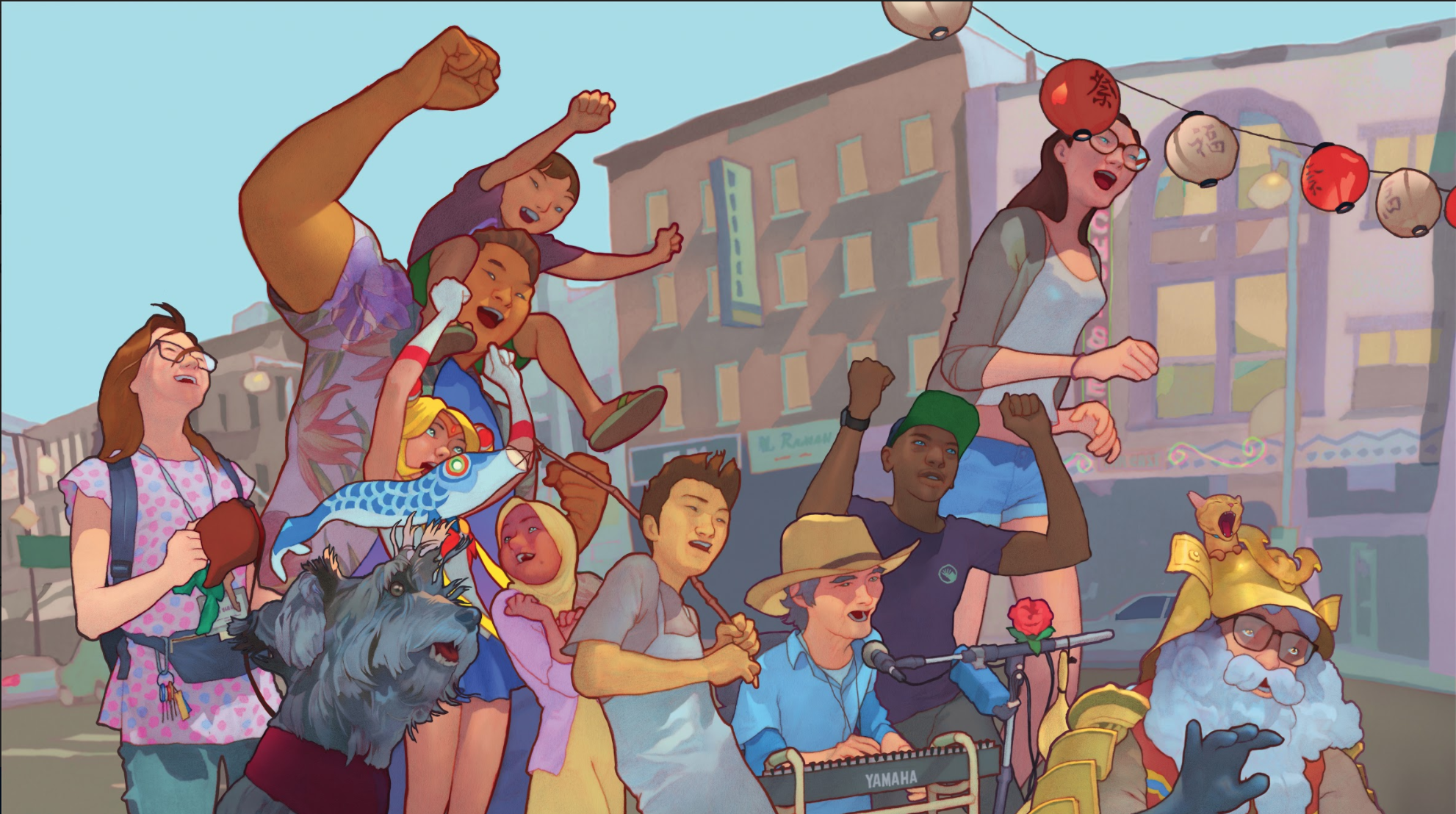
The future of First Street North and Little Tokyo is already here. It includes every member of the community that works, lives, and supports Little Tokyo in Los Angeles. This artwork depicts the historical significance of First Street North that makes this location unique and worthy of preservation.
Edwin Ushiro: “In a world that is constantly moving, my artwork preserves the stories and history of places before they are forgotten.” Ushiro received a BFA with Honors in Illustration from Art Center College of Design, and has exhibited in venues worldwide, including Villa Bottini, Grand Palais, Museum of Kyoto, Honolulu Museum of Art, and Japanese American National Museum. www.mrushiro.com
5
Savor the Umami: Little Tokyo’s Mitsuru Sushi & Grill
by Nancy Uyemura
Mitsuru Sushi & Grill
316 E 1st St
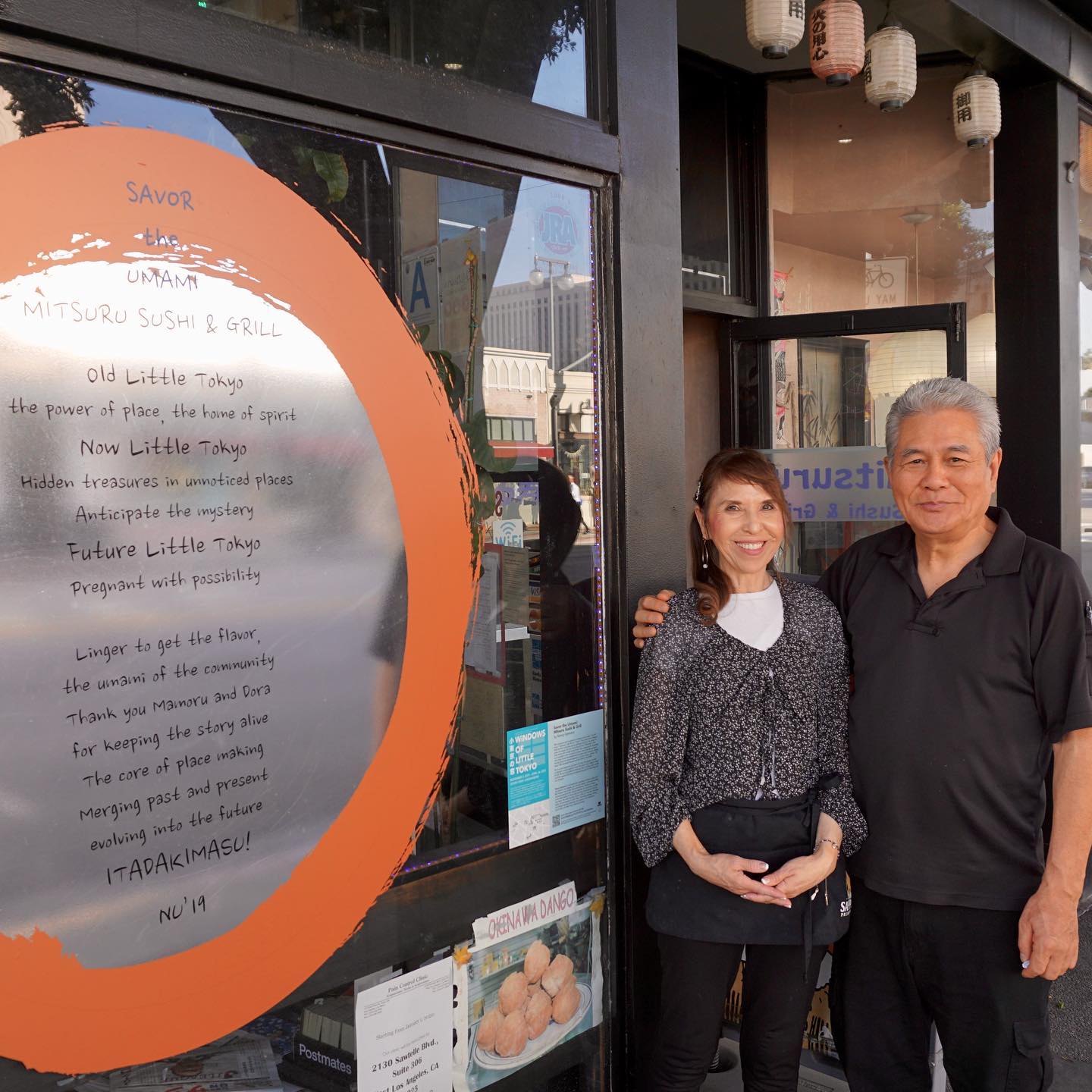
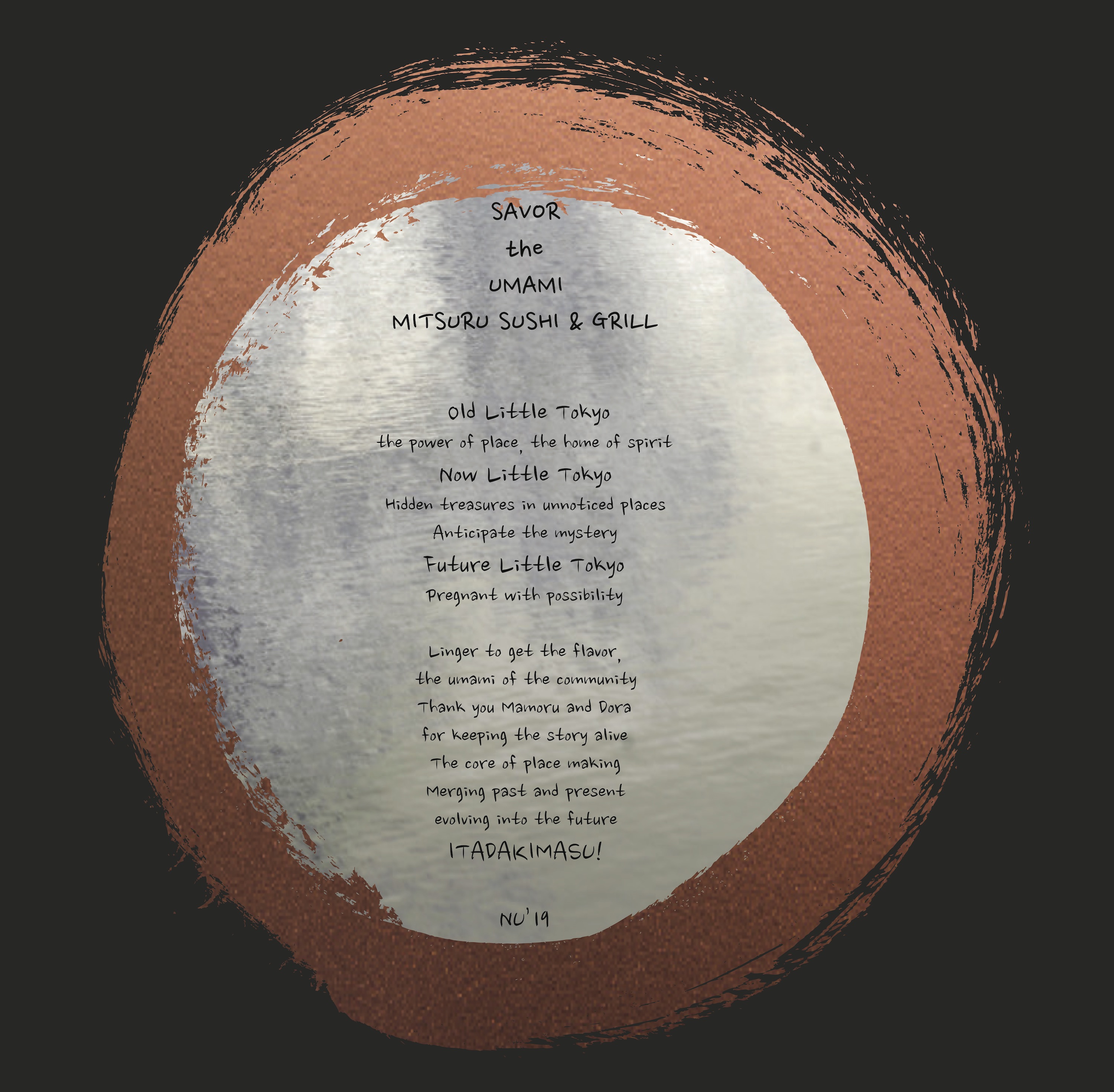
旨味 (umami) can be translated as “pleasant savory taste” from 旨 (umai/”delicious”) with 味 (mi/”taste”).
The umami that is Mitsuru Sushi & Grill is more than just the delicious food; it is the power of place, the people, the love that is found there. 円相 (ensō), a Zen circle drawn with a single brush stroke and a single breath, expresses one’s condition in the moment it is drawn. I was originally going to draw three circles but decided that the past is just a memory, unseen, and the future has not yet happened; it is just a hope, a dream. This single 円相 represents the past and the future in the NOW.
All of us who experience this place, the food, the people, and the combination coming together create the umami that is Mitsuru Sushi & Grill. We are truly grateful to Mamoru, Dora, and their staff, as well as all the regulars who keep this special place part of Little Tokyo for over 40 years.
Nancy Uyemura is a 3rd-generation Japanese American artist, born and raised in Los Angeles, and a former resident of the now-evicted 800 Traction Ave in Little Tokyo/Arts District. Director of Visual Communications for Mrs. Gooch’s Markets for many years, she also co-founded Gallery IV, which featured Asian American art from LA and Japan. Her work has been shown in the U.S. and Asia, including public art commissions in Little Tokyo. Currently painting, writing, and doing feng shui consulting, she is active in the downtown community and Little Tokyo Historical Society.
TRANSLATION:
旨味一筋: ミツル 寿司&グリル
小東京の過去
力漲る、日系人の心の故里
小東京の現在
目立たぬ佇まいに隠された至福のメニュー
驚きの発見に膨らむ期待
小東京の未来
溢れる可能性
コミュニティーに育まれた旨味、味わいを堪能するひと時を大切に
伝統を後世につなぐマモルとトーラに
感謝 過去と現在を融合し未来へと進化を続ける街の宝
頂きますッ!
NU’19
6
Mottainai: Waste Not
by Cat Chiu Phillips
Leola Lace
301 E 1st St
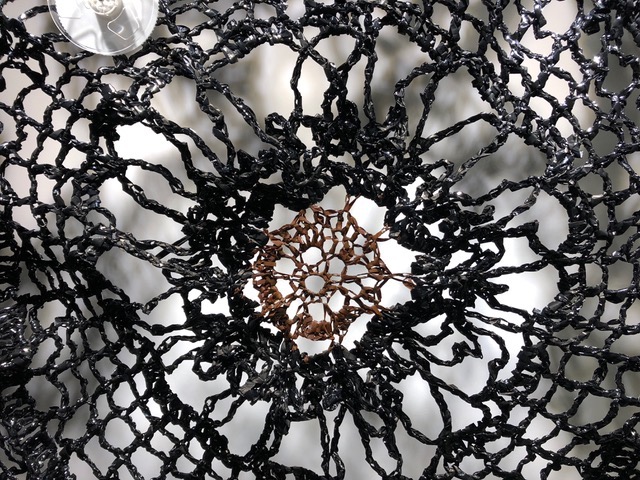
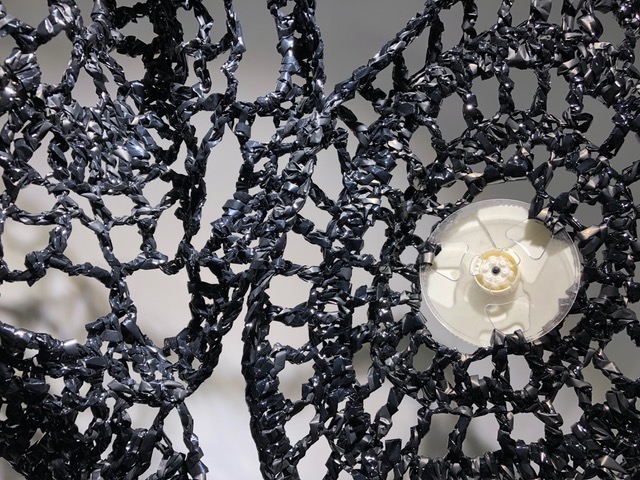
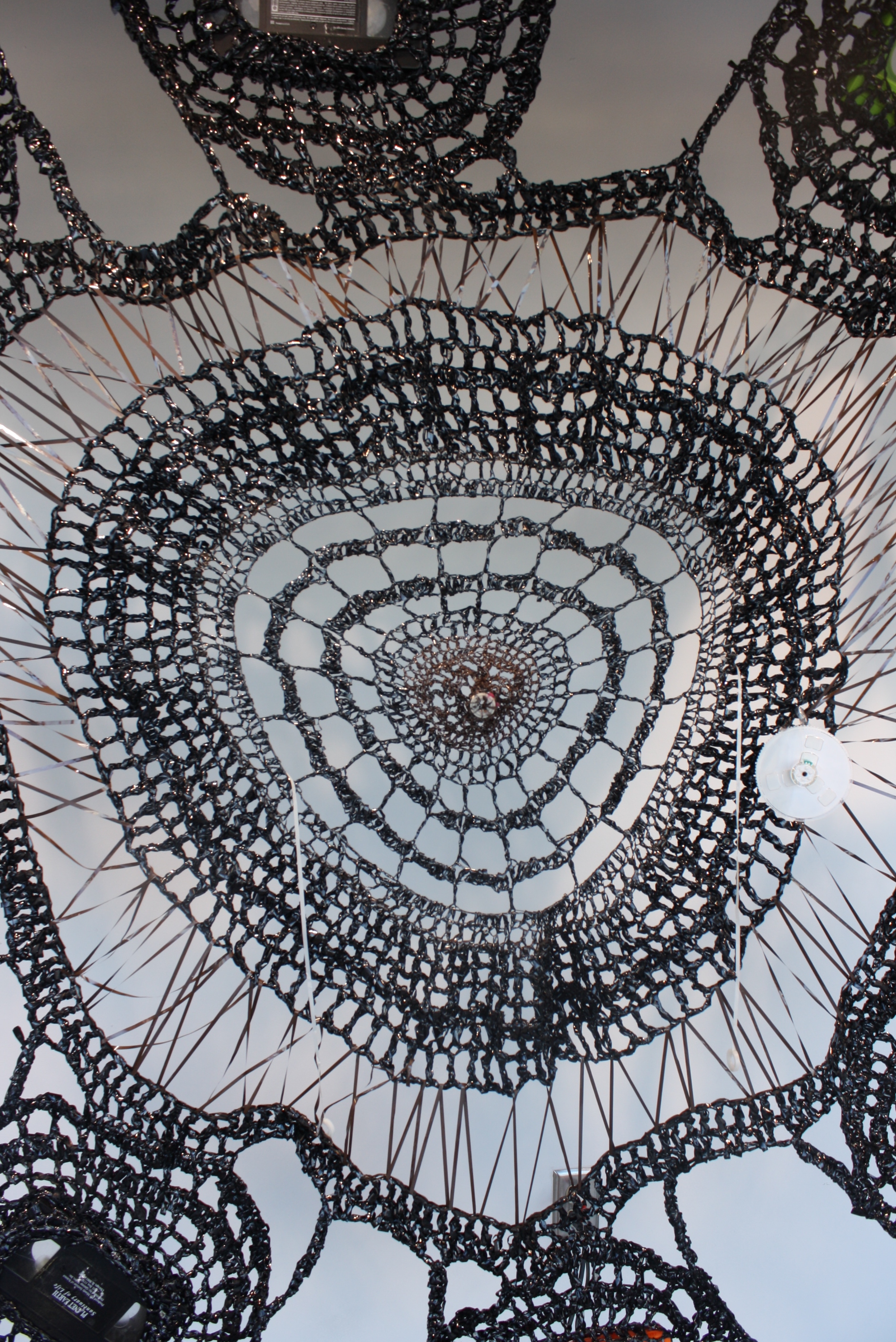
Mottainai is the Japanese concept of conveying a sense of regret concerning waste. It provides value and worth to material objects, bestowing dignity or even sacredness to it. This large-scale artwork is created from electronic waste—a playful take on handling the inevitability of advanced technologies—and completed with grace and careful composition. The project transforms obsolete audio and video materials into a playful and imaginative work. Through the Japanese ideology of “waste not, want not,” it appeals to all viewers allowing one to see the beauty of everyday objects.
Cat Chiu Phillips creates installation work in public spaces, often using traditional handicraft methods. Phillips has national public art commissions and received awards from the California Arts Council, National Endowment for the Arts, and the National Endowment for the Humanities. She has also been a public school educator for over 18 years. www.catchiuphillips.com
7
Little Tokyo Regional Forest
By Kenji Liu
LA Food Policy Council
305 E 1st St
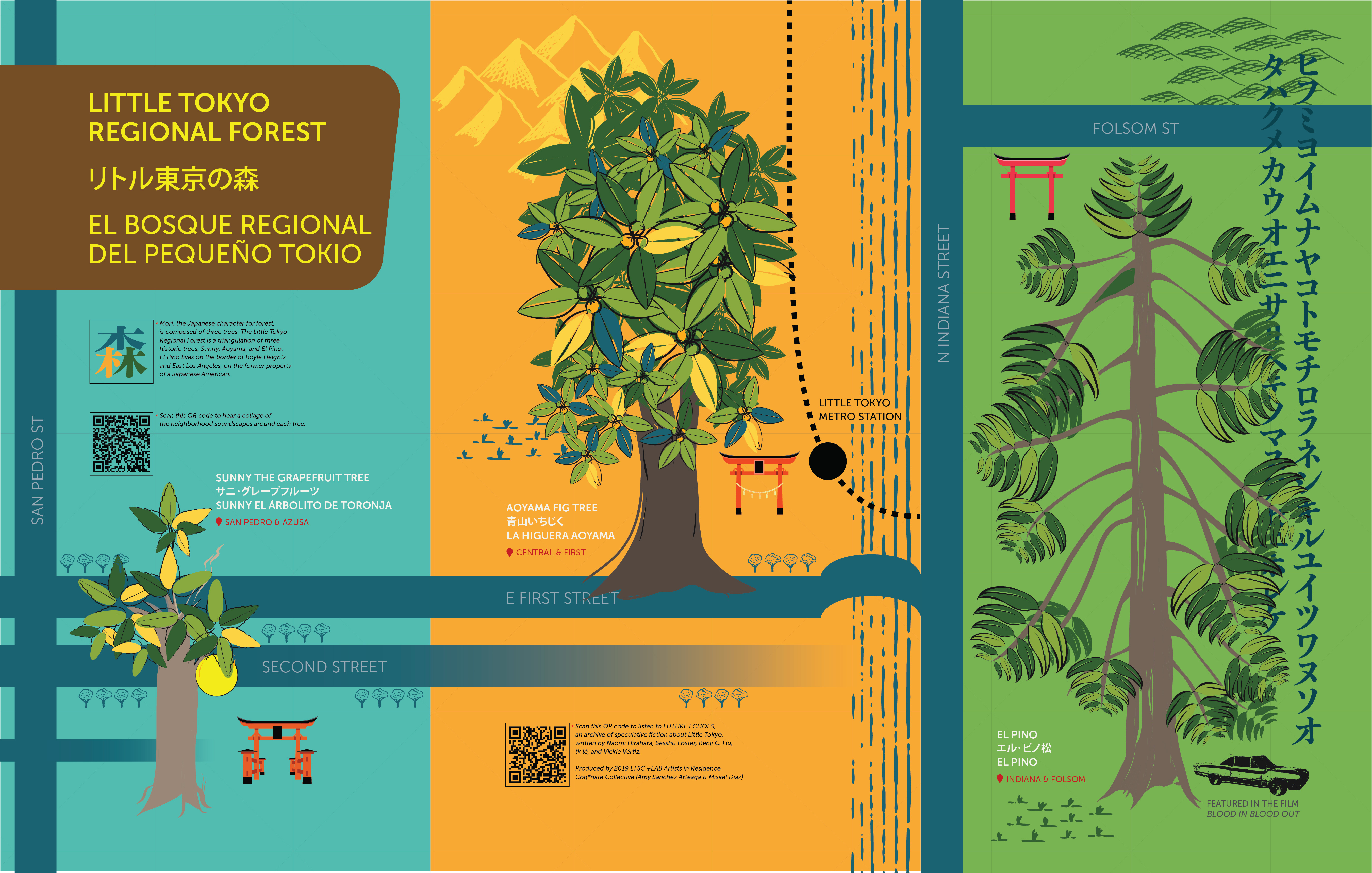
Little Tokyo Regional Forest (LTRF) is a speculative protected area marked by 3 historic trees and gateways: Sunny the grapefruit tree and the Aoyama fig tree in Little Tokyo. Agriculture and gardening have been key occupations for Japanese Americans and Latinx in Los Angeles. LTRF connects our communities by embodying 森 (mori / ”forest”) and the spirit of a forest surrounding a shrine. Historic photos show that there was once a Shinto shrine somewhere in the First Street North area.
As some of the oldest living residents, these trees witnessed great changes, provided shade and sustenance, and now remind us of what once existed. Sunny is a remnant of Little Tokyo’s former citrus groves; the Aoyama fig tree guards the original site of the Koyasan Buddhist Temple; and El Pino is a pine in Boyle Heights on former Japanese American property. As our neighborhoods are facing rampant gentrification and development, we call on these local guardians for protection and guidance.
QR codes send you to: an audio collage of ambient environmental sounds at the base of each tree; and Cog•nate Collective’s Future Echoes archive of speculative stories about Little Tokyo’s future.
Kenji C. Liu is a visual artist and author of Monsters I Have Been (2019) and Map of an Onion, national winner of the 2015 Hillary Gravendyk Poetry Prize. His poetry has appeared in numerous journals, magazines, anthologies, and two chapbooks. A recipient of artist fellowships and residencies throughout the US and Japan, he resides in occupied Tongva land. www.kenjiliu.com
8
Our Home
by Kristen Sadakane
Koban Visitor's Center
307 E 1st St
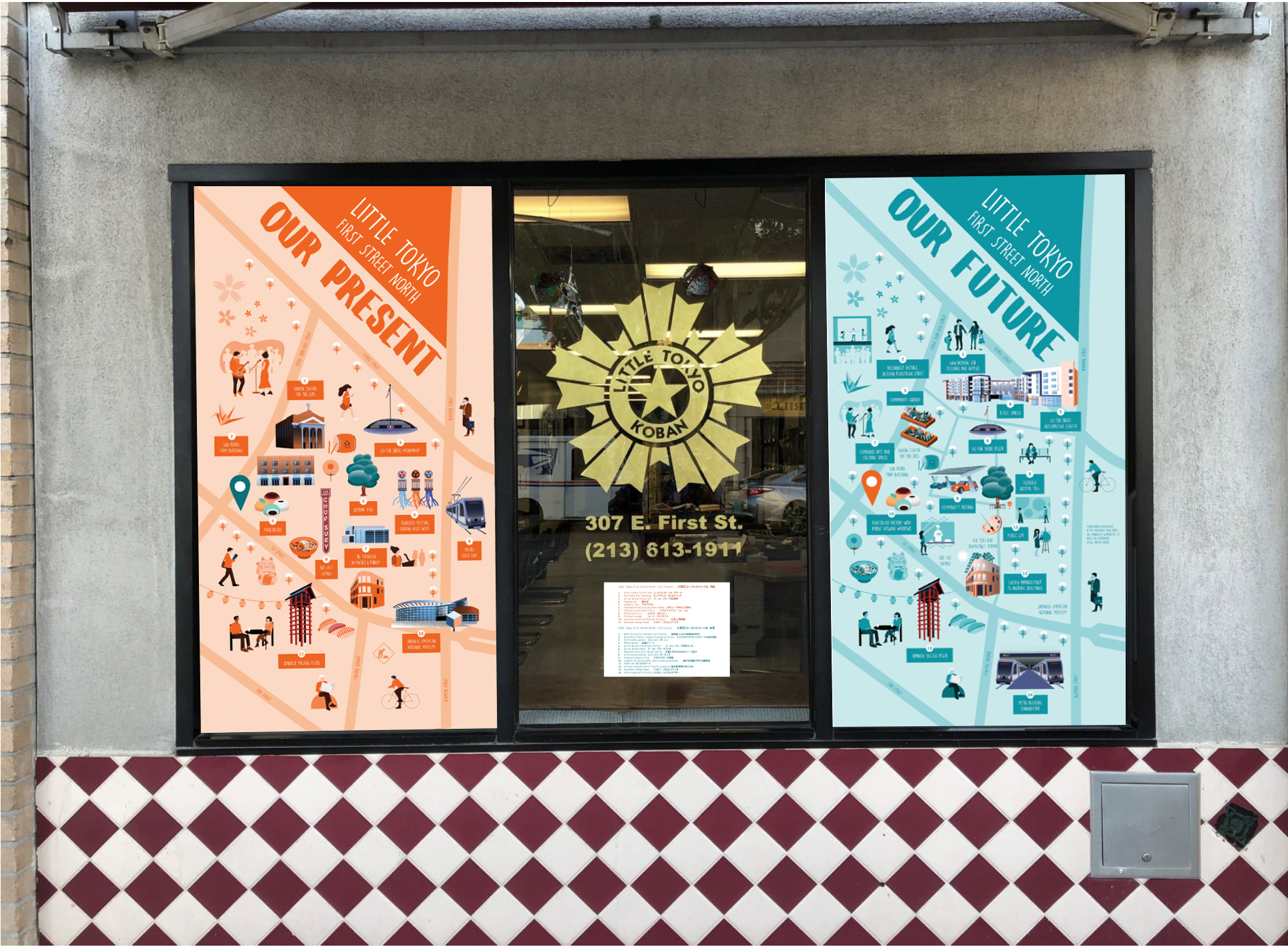
Our Home is a two-panel artwork about the present and future of First Street North (FSN), depicted through illustrated maps that highlight landmarks, cultural institutions, and businesses in that area. The Present map illustrates landmarks such as the Go For Broke monument, Japanese American National Museum, Union Center for the Arts, and Fugetsu-Do. While sustaining these existing sites, community members and Sustainable Little Tokyo envision the future of FSN to have affordable housing and commercial space, community space, and green space. The Future map depicts the new Go For Broke plaza, new housing, a community garden, energy-efficient buildings, and more arts and cultural spaces. The artwork guides visitors through the current sites while educating the community on the innovative spaces envisioned for the future. As the heart of Little Tokyo, First Street North is filled with so much historical and cultural significance that as a community we must preserve this land—our history, future, and home.
Kristen Sadakane is a Los Angeles-based graphic designer with experience in print and digital design. She has a BA in Design Media Arts from University of California, Los Angeles. After graduating, she works as a graphic designer in a marketing communications department for a software company in Long Beach. www.ksadakane.com
TRANSLATION:
Little Tokyo First Street North: Our Present
- Union Center for the Arts
- San Pedro Firm Building
- Go For Broke Monument
- Fugetsu-Do
- Aoyama Tree
- Tanabata Festival during Nisei Week
- Tateuchi Democracy Forum
- Metro Gold Line
- Far East Lounge
- Japanese American National Museum
- Japanese Village Plaza
Little Tokyo First Street North: Our Future
- New housing for veterans and families
- Reconnect Historic Jackson Pedestrian Street
- Community garden
- Retail spaces
- Go For Broke Interpretive Center
- Go For Broke Plaza
- Expanded arts and cultural spaces
- Community parking
- Featured Aoyama Tree
- Fugetsu-Do factory with public viewing windows
- Public art
- Energy improvement to historic buildings
- Japanese Village Plaza
- Metro Regional Connector
小東京ファーストストリート北:現在
- ユニオンセンターフォーザアーツ
- サンペドロファームビルディング
- ゴーフォーブローク記念碑
- 風月堂
- アオヤマツリー
- 二世ウィーク中の七夕祭り
- テラウチデモクラシーフォーラム
- メトロゴールドライン
- ファーイーストラウンジ
- 日系人博物館
- ジャパニーズビレッジプラザ
小東京ファーストストリート北:未来
- 退役軍人とその家族向け住宅
- ヒストリックジャクソンストリートの遊歩道化
- コミュニティーガーデン
- 店舗スペース
- ゴーフォーブローク案内センター
- ゴーフォーブロークプラザ
- 芸術と文化のためのスペース拡大
- コミュニティーパーキング
- アオヤマツリーの特集
- 風月堂和菓子作りの観覧窓
- パブリックアート
- 歴史的建物の省エネ化
- ジャパニーズビレッジプラザ
- メトロリージョナルコネクター
9
Unfinished Proof Ninomiya
by Alan Nakagawa
Far East Lounge
353 E 1st St
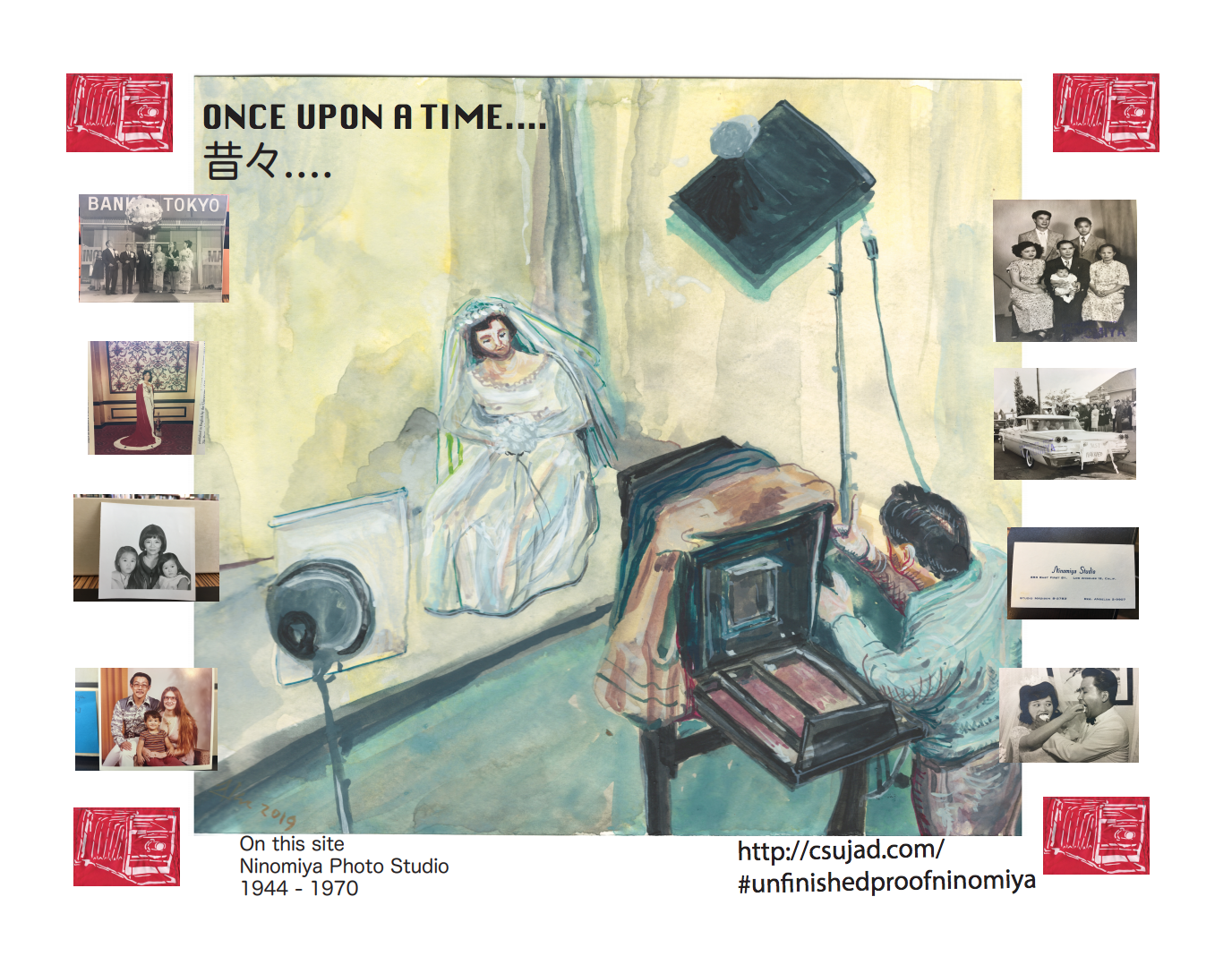
What is now the Far East Lounge was once the thriving Ninomiya photography studio. Through a circuitous route, the 100,000 photo negative collection has found a home at the Gerth Archive at CalState Dominguez Hills. Alan Nakagawa was hired in 2018 by CSUDH's Praxis Art program to research and respond to the archive as the artist in residence. What is a multi-decade image library of portraits, cultural events, funerals, weddings, and more is really a visual history of Little Tokyo, the Japanese American and the multi-ethnic community of the region. Nakagawa spent a year researching the collection and responded with a gallery exhibition, zine, and series of pop ups.
Alan Nakagawa is an interdisciplinary artist primarily working with sound and occasionally video, sculpture, drawing, paint, performance, food, and perfumes. Nakagawa is currently the Artist in Residence for the Pasadena Buddhist Temple through Side Street Projects. www.alannakagawa.com
10
What If?
by Angelica Villegas
J. Morey Co.
361 E 1st St
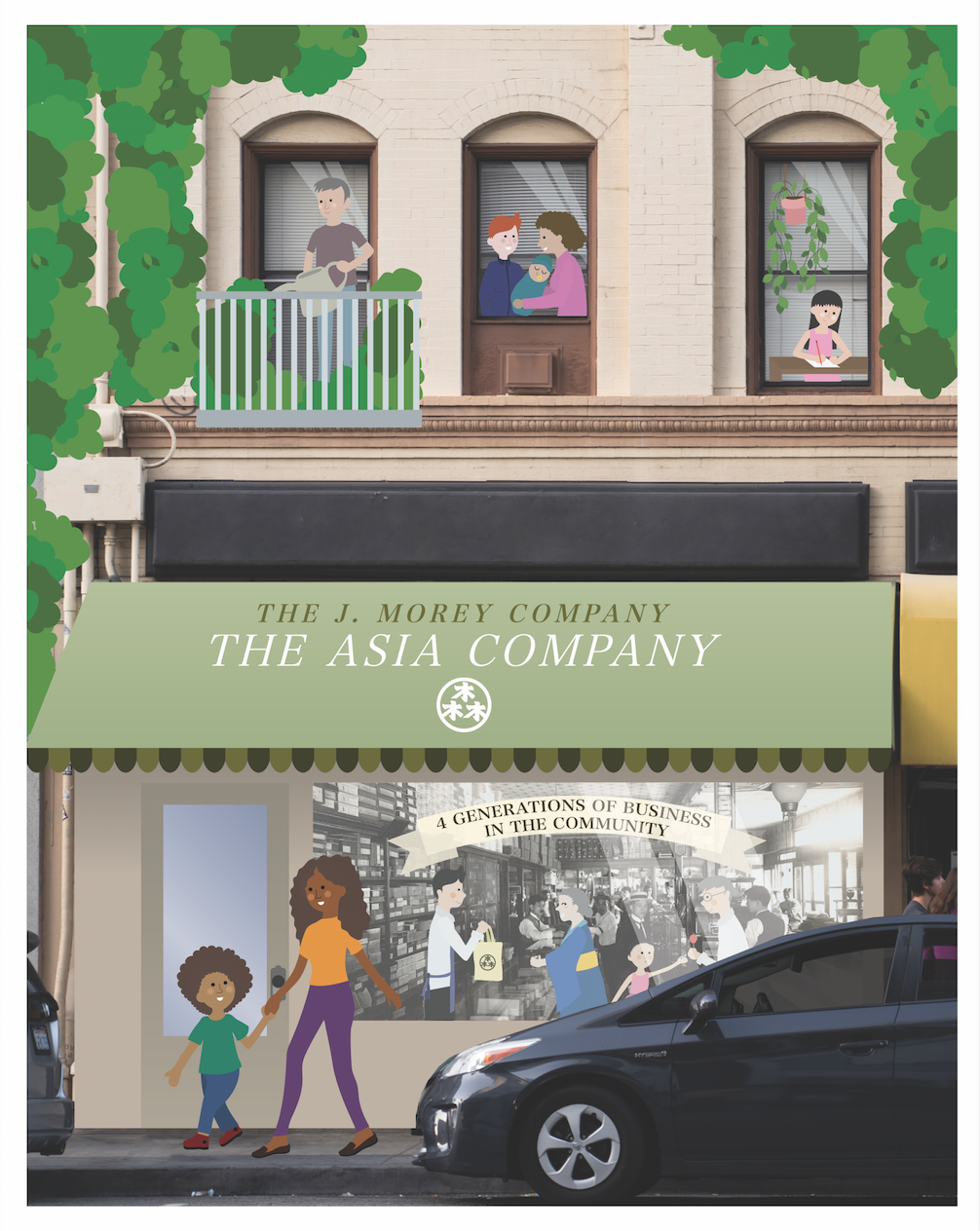
At 150 acres, Little Tokyo is one-quarter the size it was historically; three waves of displacement have reshaped this community. But what if the viewer joined the fight to save it? What If? explores Sustainable Little Tokyo’s vision for the future by reimagining the places where community can thrive. Illustrations of multi-generational and multicultural families, bustling family-owned businesses, and greenery are overlaid on a vacant storefront and empty windows, manifesting the community’s vision for affordable housing, a robust local economy, and environmentally-friendly living. By placing these visions for Little Tokyo’s future on photos of present-day places, the piece not only visualizes what the future could be, but reaffirms the possibility of making that vision a reality. What If? is a call to action for the viewer—showing the potential of empty storefronts or windows we often pass, and encourages everyone to join the fight to preserve and uplift the community.
Angelica Villegas: “I am a Little Tokyo-based Art Director/Designer who works in the beauty industry. I am a formally-trained Graphic Designer who graduated from FIDM in 2013. For 6 years, I have been crafting brands, creating visual stories, and designing digital, print and experiential creative work for companies in the beauty and fashion space. In addition, I enjoy photography and writing.” www.avillegascreative.com